 BMW R 1250 RT - Owner's Manual > Safety instructions
BMW R 1250 RT - Owner's Manual > Safety instructions
Rider's equipment
Do not ride without the correct clothing! Always wear:
- Helmet
- Suit
- Gloves
- Boots
This applies even to short journeys, and to every season of the year. Your authorised BMW Motorrad dealer will be glad to advise you on the correct clothing for every purpose.
ATTENTION Use of non-colour-fast materials (e.g. blue jeans) on the seat
Discolouration on the seat
- Avoid contact with non-colourfast materials.
Loading
WARNING Handling adversely affected by overloading and imbalanced loads
Risk of falling
- Do not exceed the permissible gross weight and be sure to comply with the instructions on loading.
- Adapt spring setting and damping adjustment to the total weight.
- Ensure that the case volumes on the left and right are equal.
- Make sure that the weight is uniformly distributed between right and left.
- Pack heavy items at the bottom and toward the inboard side.
- Note the maximum permissible payload and maximum speed for riding with cases fitted, as stated on the label inside the case (see also the chapter "Accessories").
- Note the maximum permissible payload and maximum speed for riding with topcase fitted, as stated on the label inside the topcase (see also the chapter "Accessories").
- with tank bag OA
- Observe maximum load capacity of the tank bag.

Speed
If you ride at high speed, always bear in mind that various boundary conditions can adversely affect the handling of your motorcycle:
- Settings of the spring-strut and shock-absorber system
- Imbalanced load
- Loose clothing
- Insufficient tyre pressure
- Poor tyre tread
- Etc.
Maximum permissible speed with winter tyres
DANGER Maximum speed of the motorcycle is higher than the permissible maximum rated speed of the tyres
Risk of accident due to tyre damage at high speed
- Comply with the tyre-specific speed restrictions.
Always bear the maximum permissible speed of the tyres in mind when riding a motorcycle fitted with winter tyres.
Affix a label stating the maximum permissible speed to the instrument panel in the rider's field of vision.
Risk of poisoning
Exhaust fumes contain carbon monoxide, which is colourless and odourless but highly toxic.
WARNING Exhaust gases adversely affecting health
Risk of asphyxiation
- Do not inhale exhaust fumes.
- Do not run the engine in an enclosed space.
Risk of burn injury
CAUTION Engine and exhaust system become very hot when the vehicle is in use
Risk of burn injury
- When you park the vehicle make sure that no-one and no objects can come into contact with the hot engine and exhaust system.
Catalytic converter
If misfiring causes unburned fuel to enter the catalytic converter, there is a danger of overheating and damage.
The following guidelines must be observed:
- Do not run the fuel tank dry.
- Do not attempt to start or run the engine with a spark-plug cap disconnected.
- Stop the engine immediately if it misfires.
- Use only unleaded fuel.
- Comply with all specified maintenance intervals.
ATTENTION Unburned fuel in catalytic converter
Damage to catalytic converter
- Note the points listed for protection of the catalytic converter.
Risk of overheating
ATTENTION Engine running for prolonged period with vehicle at standstill
Overheating due to insufficient cooling; in extreme cases vehicle fire
- Do not allow the engine to idle unnecessarily.
- Ride away immediately after starting the engine.
Tampering
ATTENTION Tampering with the motorcycle (e.g. engine management ECU, throttle valves, clutch)
Damage to the affected parts, failure of safety-relevant functions, voiding of warranty
- Do not tamper with the vehicle in any way that could result in tuned performance.
Comply with checklist
- At regular intervals, use the checklist below to check your motorcycle.
Always before riding off
- Check operation of the brake system.
- Check operation of the lights and signalling equipment.
- Checking clutch function.
- Checking tyre tread depth.
- Checking tyre pressure.
- Check that cases and luggage are securely held in place.
- without Dynamic ESA OE
- Adjusting spring preload for rear wheel.
- Adjusting the damping characteristic for rear wheel.
Every 3rd refuelling stop
- Checking engine oil level.
- Checking front brake pad thickness.
- Checking rear brake pad thickness.
- Checking brake-fluid level, front brakes.
- Checking the brake-fluid level, rear brakes.
- Check coolant level.
See also:
 BMW R 1250 RT - Owner's Manual > Starting
BMW R 1250 RT - Owner's Manual > Starting
Start engine Switch on the ignition. Pre-Ride-Check is performed. ABS self-diagnosis is in progress. ASC self-diagnosis is performed. Select neutral or, if a gear is engaged, pull the clutch lever.
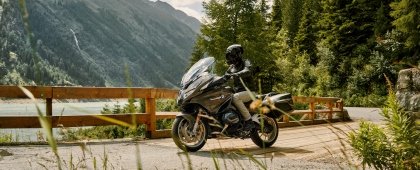 BMW R 1250 RT
BMW R 1250 RT Kymco Agility 50
Kymco Agility 50 Piaggio Liberty 50
Piaggio Liberty 50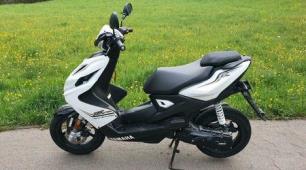 Yamaha aerox NS50
Yamaha aerox NS50 Aprilia SR50R
Aprilia SR50R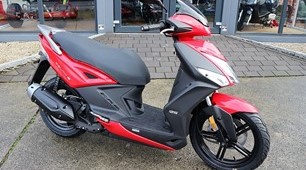 Kymco Agility 50
Kymco Agility 50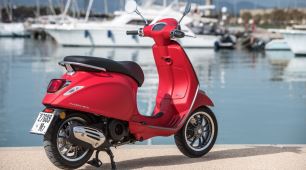 Vespa Primavera 50
Vespa Primavera 50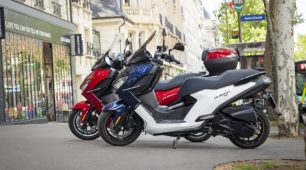 Peugeot Speedfight
Peugeot Speedfight